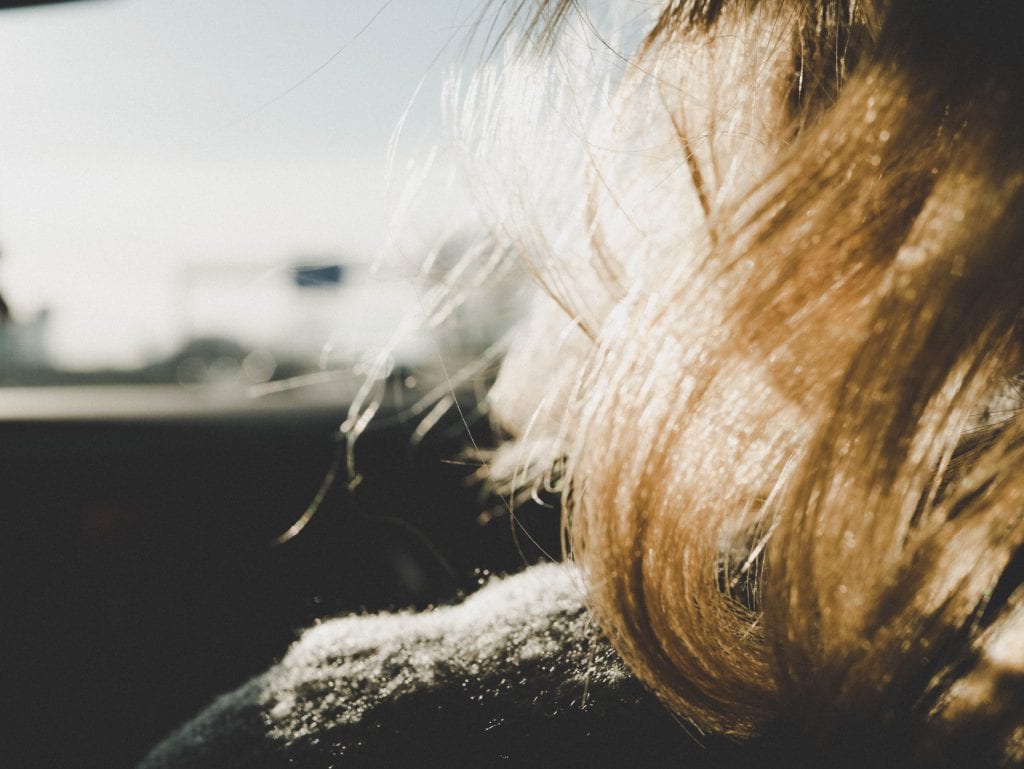Do you suffer from hair pulling? If so, then you will know what a debilitating condition it can be. You may feel embarrassed to talk about the way you feel, or that you are simply not able to control your impulses. Either way, you have to understand that the way you feel is completely normal and that you are not alone. If you want to find out more, then simply take a look below.

What is TTM, Trich, Trichotillomania?
Trichotillomania is pronounced trick-oh-toll-oh-may-nee-ah. It’s a mental condition where someone cannot resist the urge to pull their hair out. This can include the scalp, eyelashes, eyebrows or even under the armpits. Genital hair pulling is also very common in those who have been diagnosed with the condition. The most common way that people pull their hair is through their fingers, but some sufferers have been known to use tweezers or various other instruments in the past. Trichotillomania is categorised under OCD, but some refer to it as being a body-focused repetitive behaviour.
Similarities between OCD and Trichotillomania
While there are some ritualistic or compulsive similarities between both OCD and trichotillomania, it’s important to know that there are some differences. OCD tends to be driven by intrusive, unwanted thoughts. This could include the worry of something bad is going to happen, or the sufferer having to do things repetitively, as they believe that it will stop something bad from happening. Trichotillomania however is more of a body-focused behaviour, as the person in question will pull their hair to try and reduce tension or stress. They may even do it out of habit, as opposed to being initiated by any unwanted or intrusive thought.
Consequences of Having Trichotillomania
People who have trichotillomania may feel the urge to pull their hair out and they feel extreme tension if they don’t. After the hair has been pulled, they then feel a sense of relief. This shares similarities with a skin-picking disorder. The main consequence from Trichotillomania is that the person in question may be left with bald patches or they may have hair which is an unusual shape. This can lead to them trying to cover up their hair by using hats, false eyelashes or even scarves. Some even resort to having their eyebrows tattooed on them, so that they can disguise their condition. Sufferers tend to avoid social interactions, and this causes them feelings of low-self esteem and shame. Those who are affected may feel inclined to keep their condition to themselves because they feel ashamed or embarrassed.
Another consequence of having trichotillomania is that people often find that they chew or even swallow their hair, which leads to digestive or even dental problems. The condition is found mostly in females, but it does affect males too. It develops at an early age, but it can stay with the sufferer until they get treated.
The First Diagnosis of Trichotillomania
It’s thought that the very first diagnosis of trichotillomania was in 1889. Francois Henri Hallopeau combined three different words to detail the condition. They include:
- Thrix- which means hair
- Tillein- which means pulling
- Mania- which means madness
Hallopeau described a young male patient who had torn out tufts of his hair. The American Psychiatric Association then recognised the condition as being a mental disorder in the year 1987.
Does Everyone Pull the Same Way?
A lot of people think that those who pull their hair, do it in the same way. This is not the case at all. Some people twist their hair before pulling it, others feel the need to pull out singular hairs and it’s also not uncommon to see people grasping at tufts. The way that you pull your hair will usually be unique to you, and the triggers you have will also be unique as well. Just like OCD, no two diagnosed patients who have trichotillomania have the exact same method and triggers, so this is a very important point to keep in mind.
The Effect on the Sufferers and Their Families
The physical effects that are often caused by trichotillomania are often very easy to detect. Over time, the negative attributes that stem from physical hair pulling can manifest themselves in many ways. This can include:
- Unusual bald patches
- Sparse eyebrows or lashes
- Irritated patches of skin
As distressing as the physical symptoms of hair pulling can be, it’s important to understand that the emotions that come from the mental strain are sometimes more devastating. Trichotillomania’s physical effects are both visible and exposed. The emotional fallout is internalised, and this can make it much more difficult to cope with the condition.

The Emotional Impact of Trichotillomania
The short-term and long-term effects can be worse than the physical manifestations. Someone who is suffering from trichotillomania may feel a great deal of anxiety. This could stem from being stressed by their hair pulling or even people commenting on it when they are out. They may feel nervous about what others might think as well. These feelings can cause someone to isolate themselves from their family or their friends while also withdrawing from a lot of social situations. Another negative emotion that can stem from trichotillomania is depression. The emotion can develop when feelings of hopelessness and self-doubt surface. They may wonder why they cannot stop doing what they are doing, and they may feel powerless when it comes to controlling their urges.
If you suffer from trichotillomania, you know that it is a disorder. This won’t stop you from being able to blame yourself for what you’re doing, and this can fuel your feelings of societal withdrawal even more. This type of depression can be particularly impactful as it may lead you to different means to cope. This can include drugs or alcohol. A cluster of negative emotions can manifest itself right after you have pulled your hair. You may feel guilty, shameful or even embarrassed. This will then cause you to think about the negative ramifications of the act and this can cause you to feel low self-esteem.
The Vicious Cycle
Studies have shown that the onset of hair pulling can be a result of depression, stress or even anxiety. Trichotillomania can be a coping mechanism which provides relief from this. The act of hair pulling can cause a cycle effect which perpetuates the negative feelings and the relief you feel when you act on it. You may feel remorse when you pull your hair, but this can easily turn into depression or anxiety. While there is a need to break this cycle, it comes with, what can be referred to as being an “egg and chicken” situation. It can be difficult for you to pinpoint where the cycle starts. It’s not easy to find out if the depression started the hair-pulling or if the hair-pulling is causing the depression.
Recognising Emotions
There are many therapies that you can take to try and combat the negative emotions that come with hair pulling. The first step would be for you to know that you are not alone when it comes to your condition and that you do not need to fight this condition alone. The journey of self-recovery can be a long one, but at the same time, there are people who are around to help you.
No Pulling Week
No pulling week is designed to help those who do pull their hair, feel way less alone in the situation that they are in. It helps them to feel assured knowing that there are others out there and it brings a lot of awareness to the condition as well. This condition affects around 110 million people across the world. The campaign is designed to shed light on this issue and the campaign was launched by Lucinda Ellery. She is the founder of the TLC charity. The campaign has gone international in its overall reach and there are many global charities that have participated as well. Everyone is on board to try and spread the word and this is really helping people to feel more at ease when it comes to talking to others about the way that they feel.
According to Lucinda, she has thousands of clients who span across both the UK and America, and they are all doing their bit to try and raise awareness of no pulling week. They are also trying to offer solutions to those who suffer as well. They want to try and stop people from feeling alone. So many young women in particular are affected by trichotillomania, or TTM, but not many people talk about it. By showing how common it is, it helps people to come forward.
The condition takes many forms, including skin picking, eyelash pulling and even nail biting. Celebrities such as Sam Faiers and Oliva Munn have all spoken out about their own battles with the condition and they have pulled out their eyelashes in the past.
We might all be guilty of pulling our hair out from time to time, whether it’s while you are watching TV at home or whether you do it while you are stressed at work. Trichotillomania happens when this turns into something much more serious. Trichotillomania also occurs when self-inflicted hair loss happens. You may find that twiddling your hair turns into pulling and that you develop bald patches over quite large areas. Some people play with their hair so that they can find out which one is going to hurt the most when it’s pulled. It’s this level of satisfaction that causes them to pull another, and so on. This can go on for years because the hair that is pulled grows back, at first. Eventually, this can lead to more permanent issues, leaving you with low self-esteem.

Trichotillomania Hair Replacement
If you suffer from trichotillomania, then you’ll be glad to know that there are some products out there that can camouflage your thinning hair and help with Trichotillomania Management. They are applied to the hair and they give the appearance of fullness. Others are applied to the scalp and they consist of fibres or human hair, which match the original hair colour. For some, this is an effective solution as it helps them to feel more at ease and in some cases helps to calm or reduce urges. In the early stages of the condition, it’s important to know that it’s possible for hair to regrow through medication or in some instances, psychotherapy. If the pulling goes on long enough then the hair loss will become permanent. This is because scars develop around the damaged hair follicles and this can block hair growth even more. Patients who suffer from trichotillomania often ask if it is possible to have a hair transplant. In some instances it is possible, but not in every case, so a hair replacement system is normally the best option.
Trichotillomania Symptoms
If you are concerned that you have trichotillomania or if you want to better understand the symptoms then you can find out everything you need to know, right here. Signs and symptoms of trichotillomania often include:
- Pulling your Hair Out
This can be on your scalp, eyelashes or eyebrows. It can also be in other areas of your body, or sites over time.
- Increasing Sense of Stress Before Pulling
When you try and resist pulling or when you are about to pull
- A Sense of Pleasure after you Have Pulled the Hair
You may also experience a sense of pleasure when you have pulled the hair.
- Noticeable Hair Loss
Another notable symptom is hair loss that is easily seen. This can include bald areas, shortened hair or thinned hair.
- Preference for Specific Types of Hair
You may well have a preference for specific types of hair, or even rituals that accompany hair pulling.
- Biting, Chewing or Eating Pulled Hair
Biting, eating or chewing pulled-out hair is also another sign, and this can cause obstructions at a later date.
- Playing with Pulled Out Hair
You may find that you play with the hair you have pulled or that you rub it across your lips or even your hair.
Triggers for Hair Pulling
Did you know that there is a difference between a trigger for hair pulling and a cause for hair pulling? If you want to find out more then simply take a look below.
Trigger
The first thing that we are going to cover is the trigger. If you were to go to therapy for your OCD or your hair-pulling disorder, then you will usually be asked what triggers you to pull. This inclination is that someone is trying to find out the cause of your behaviour, but this is not the case at all. It’s more like trying to identify the underlying or even external cues that might happen right before pulling. Internal cues could include emotional stress, your thought process or even psychological sensations. External cues can include situations, places or even people. When any of these cues happen, someone who suffers from compulsive hair pulling may respond to the cues by tugging at their hair. This serves as a purpose which helps them to deal with the cues, and this is something that you will learn more about during therapy. The concept of triggers has roots when it comes to behavioural therapy. Pavlov’s dog experiment is a good example here. Pavlov conditioned and trained dogs to salivate when a bell was rung. The bell was a trigger, or a cue and this made the dogs respond on a physiological level.
Anxiety or stress are known triggers when it comes to those who struggle with hair pulling. Anxiety is experienced differently by a lot of people. If someone was to feel an uncomfortable sensation when they are anxious, then this can be relieved by pulling hair. The bell in the Pavlov example would be the anxiety in this situation. So when the bell of anxiety goes off, the sensation starts, and you pull your hair to try and relieve this discomfort. Over time, this compulsion will become so great that you end up feeling anxiety and pull, without feeling the pain or sensation of discomfort. This might be an oversimplification, but at the end of the day, when someone goes to therapy they might know why a trigger is a trigger, or what their trigger even is.
Cause
A cause is very different to a trigger. A cause is something that directly brings about an action or a consequence. While we are learning about triggers, it’s important to know that scientists don’t know what causes someone to pull hair. It’s a similar case when you look at other body-focused behaviours. Almost everyone experiences anxiety at some point in their lives, but not every single person pulls hair. Some say that there is a genetic vulnerability involved but right now, it would appear that there isn’t enough evidence to say for sure. The speculation of a vulnerability is based on showing that those who have a history of OCD are much more likely to develop a hair-pulling disorder. Modern research is looking at the genetic causes for the disorder, but the conclusions are really a long way in the future.
The good news here is that you do not need to know the cause of your disorder to treat it. If triggers can be managed or identified, then body-repetitive behaviours can be retrained so that they respond differently.
Most Common Triggers
The 20 most common responses, from a survey about hair-pulling include:
- 48% of people say Stress
- 34% of people say Boredom
- 13% of people say Anxiety
Some of the other responses include watching TV, sitting down, reading, nerves, being alone, worry, tiredness, depression, driving, certain food or even looking in the mirror.
Know that Help is Out There
If you need some help with your condition or if you are finding it increasingly difficult to cope with your hair pulling, then you need to know that help is out there. It’s more than possible for you to get some support with the hair-pulling that you are doing, and you may even find that you’re able to emerge stronger than ever. Counselling is a good option, or you can talk to your doctor to see if they can provide you with something that will help you with the feelings that are associated with your hair pulling. Either way, there is a light at the end of the tunnel and when you do explore your options, you will soon see that it is easier than ever for you to start taking control of your situation once more. If you need some help covering up your hair loss or if you need some help to camouflage your thinning hair, then please do get in contact with us at Image & Co. When you do, you can then count on us to give you the help and support you need with our knowledge and Women’s Hair replacement options.



